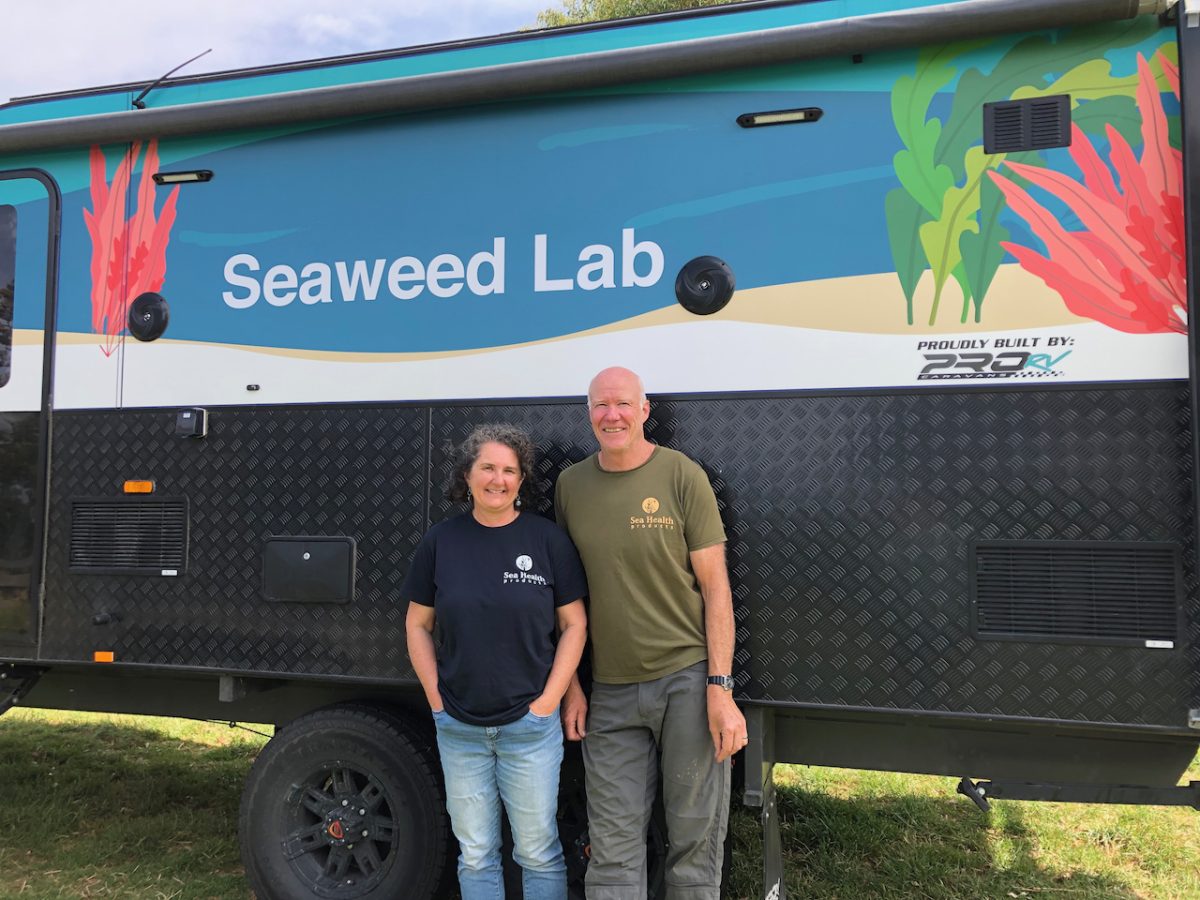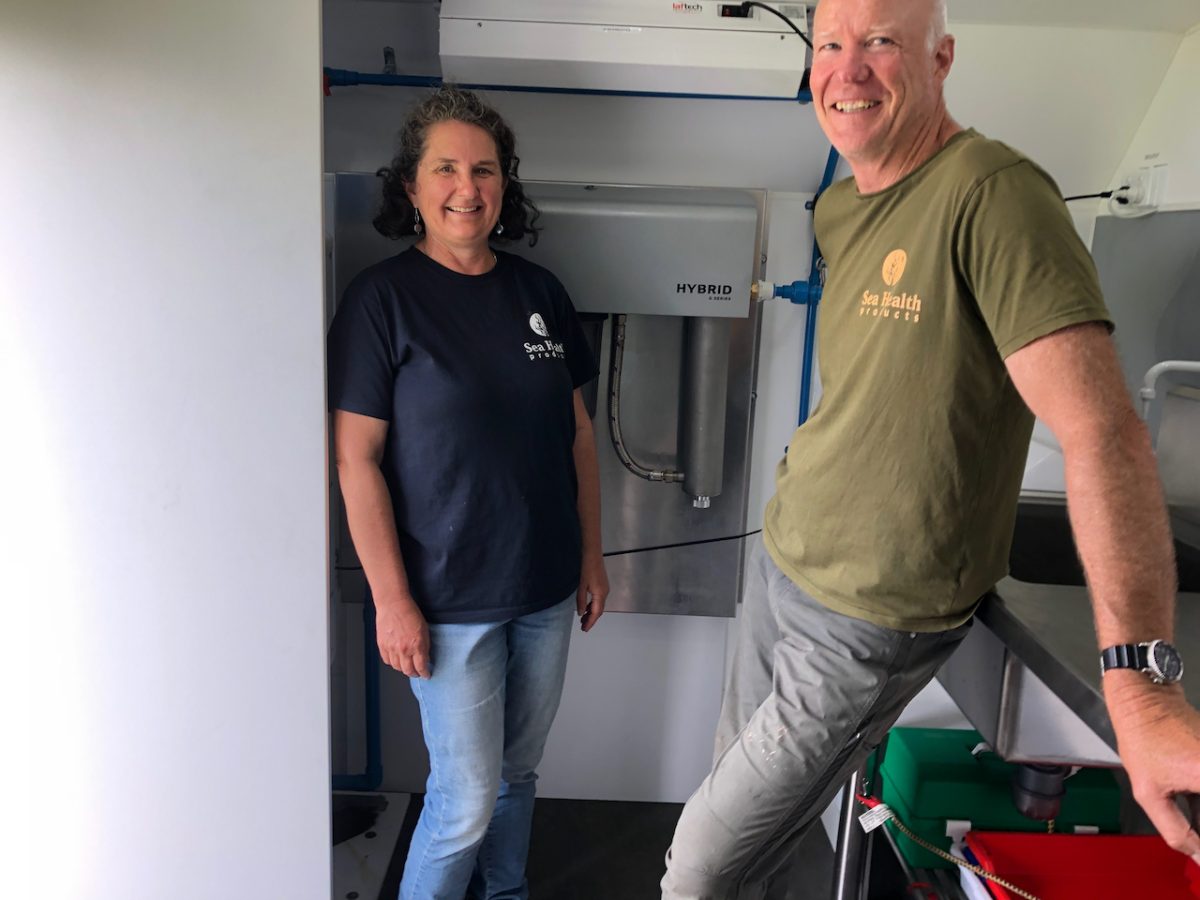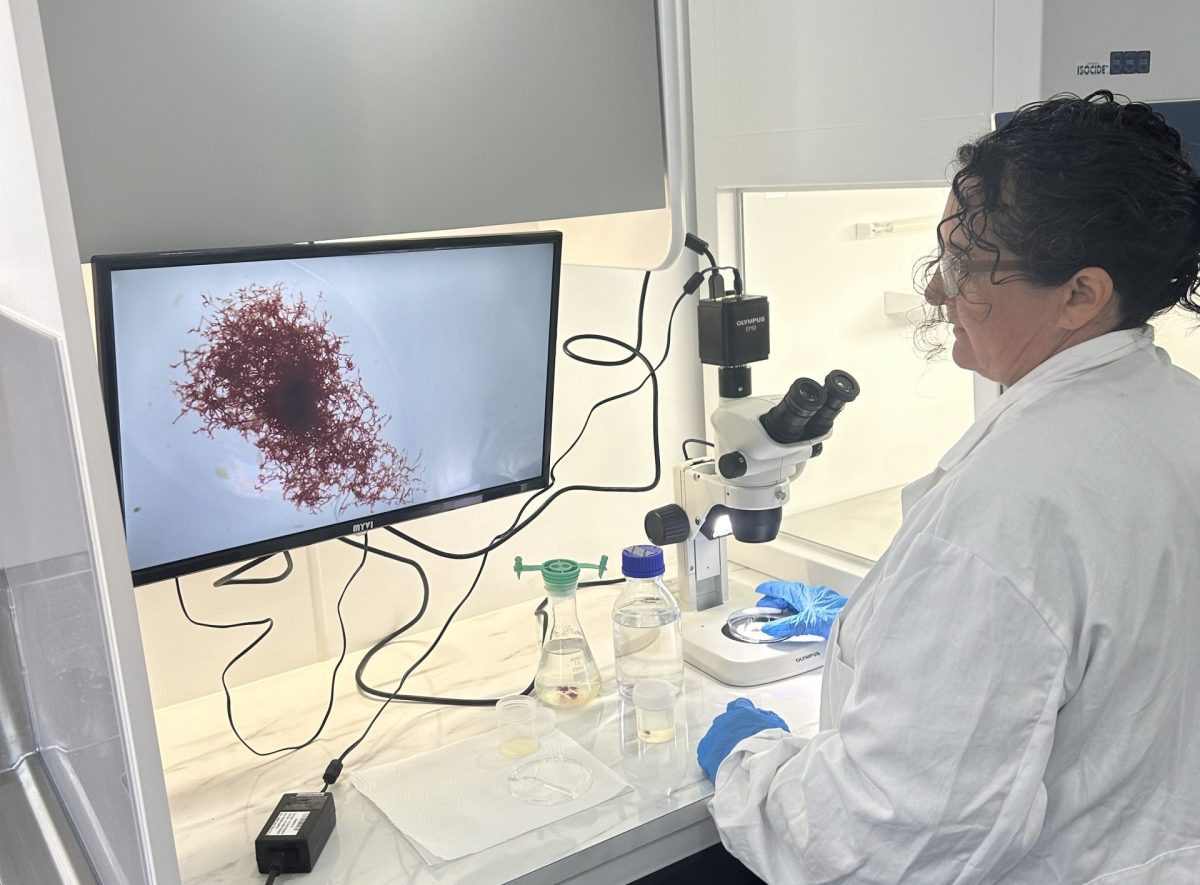
Jo Lane and Warren Atkins with Australia’s first mobile seaweed hatchery. Photo: Marion Williams.
After two fruitful years in South Australia, Jo Lane is back at her Tilba property with many more wide-ranging seaweed projects underway. These include being at the forefront of the development of Australia’s seaweed industry, promoting Australia’s first mobile seaweed hatchery and being involved in NSW’s efforts to restore the Great Southern Reef kelp forests that are being destroyed by the long-spined sea urchin.
Ms Lane bought Narooma-based Sea Health Products in 2015. It fitted with her degree in marine science and early aquarium work, which highlighted her love for the ocean and marine conservation. She later worked for the World Wildlife Fund and federal, state and local governments in various roles.
While working for the NSW Department of Primary Industries (Fisheries), she processed the permit for Sea Health Products to collect marine vegetation, which piqued her interest. Ten years later, she bought the business.
The business, which started in the 1960s, manufactures and sells food and health products from locally harvested kelp.
What started as a part-time business for the young mother became an obsession as she and her husband, Warren Atkins, got excited about the possibilities and applications for kelp. They built their first laboratory to grow kelp from seed in Tilba.
They realised that if they had more kelp, they could make more products, which got her interested in farming.
NSW planning and regulatory processes were formidable, as was opposition from some local community groups.

Jo Lane and Warren Atkins inside their special lab. Photo: Marion Williams.
So, Ms Lane’s family moved to Port Lincoln in South Australia, where state regulations supported kelp farming, and as Australia’s seafood capital, the community understood how aquaculture could generate regional jobs. Mr Atkins built another hatchery there.
The couple now has approved marine leases and a hatchery in South Australia. They will work with existing aquaculture leaseholders, including tuna and mussel farmers, to introduce kelp farming to South Australia.
“We have these skills and experience in growing seaweed sea stock, so we can expand the hatchery and give the seed stock to tuna fishers and other aquaculturists to grow on their leases,” Ms Lane said.
“We just want to grow lots of kelp and have enough biomass to get an industry started, and help offset the nitrates in the ocean and even potentially mitigate the algal blooms.”
So, Ms Lane remains involved in South Australia despite her and her family’s recent return to Tilba.
In November 2023, Ms Lane began working with the Australian Sustainable Seaweed Alliance, which received an $8.1 million Federal Government grant to support the development of the seaweed industry. As research lead at the National Hatchery Network hub in Adelaide, she mostly worked on the life cycle of Asparagopsis armata, a seaweed known to reduce cattle methane emissions.

Jo Lane at work in the hatchery. Photo: Supplied.
As part of the grant, Mr Atkins won the tender to design and build a portable hatchery prototype, also known as the “Seaweed Lab”, to assist start-ups and researchers, and for educational and awareness opportunities.
“You can take it into the field, collect specimens and process them straightaway,” Ms Lane said. “Being so fresh increases the success rate and reduces contaminants. It is a prototype. Australia’s first mobile seaweed hatchery.”
Mr Atkins’ background in air conditioning, refrigeration and work in hospital air and water filtration was critical to building the hatchery. Contaminants must be controlled to provide a clean starting culture.
Ms Lane is living in two worlds as she is also concerned about the decline in kelp forests on the east coast due to the proliferation of sea urchins. She is working with Wally Stewart’s Narooma-based Joonga Land and Water Aboriginal Corporation, growing kelp seedstock that can be used in kelp restoration projects.
“As a marine conservationist, kelp forests are critical as they provide habitat for fish, rock lobsters and abalone, so [the focus is on] how can we restore this in NSW?” she said. “As a result of climate change, we are seeing increased marine heatwaves on the east coast, which favour the reproduction of the urchins.
“I’m still interested in pursuing kelp farming in South Australia because I believe seaweed has so many positive applications in food security, fertiliser, agricultural feed, cosmetics, and more.”
Ms Lane said there was research into bioplastics, textiles, and even building materials and she saw applications for kelp in the circular economy.
“If we have more kelp, we can do all of that. There is definitely demand,” she said. “But first we need to grow the kelp in Australia for those applications and to create jobs, and to create a sustainable new seaweed industry.”







